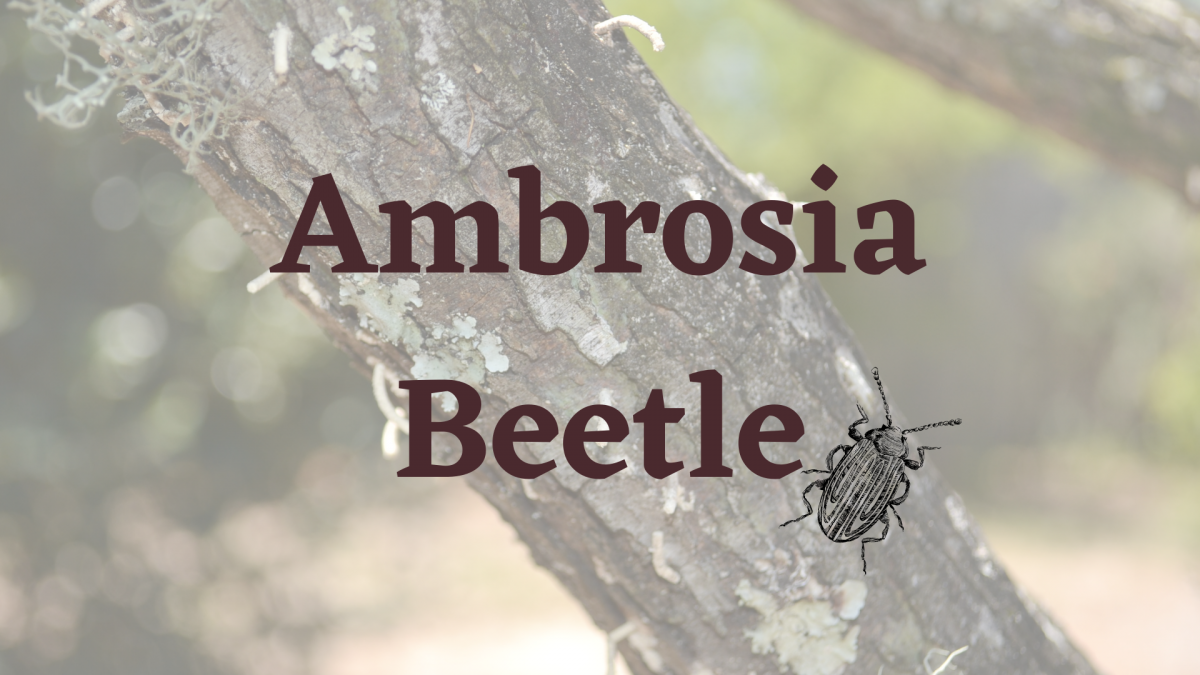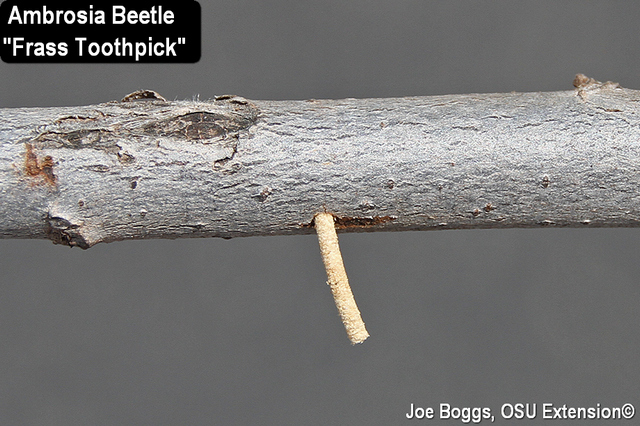Ambrosia Beetle

By: Kate Bolkin, Community Educator and Arborist
The Ambrosia beetle (Xyleborus spp.) is an invasive insect that attacks stressed, dying, and recently diseased trees. Ambrosia beetles were first introduced to the United States from Asia about 50 years ago and are most active in North Carolina during spring once the weather starts to warm up. If you have a tree that is newly planted or a tree that might be experiencing some stress, it is a good idea to check it for Ambrosia beetles.
Host Species:
Ambrosia beetles are known to attack a wide variety of different tree species, but generally prefer thin-barked deciduous trees. Some popular hosts include dogwoods, redbuds, cherries, maples, crape myrtles, and many more.

Signs of Ambrosia Beetle:
The most tell-tale sign of an ambrosia beetle infestation is toothpick-looking frass emerging from holes in the trunk and branches. The beetles tunnel through the wood while eating fungus inside, which causes the frass to pop out. The beetles themselves are very tiny (about 3-5mm long), so spotting individuals can be difficult.
Damage:
When these beetles tunnel through a tree’s wood, they introduce fungus into its vascular system that they then eat. The fungus can block up the tree’s vascular system, which prevents water, nutrients, and sugars from moving throughout the tree. The boring damage can also introduce additional pathogens inside the tree. Younger trees seldom survive Ambrosia beetle attacks and established trees may survive but must be monitored extensively.
Management:
Ambrosia beetles attack stressed, dying, or newly dead for trees because they are attracted to the ethanol that trees produce when they are stressed. Therefore, management is primarily focused on prevention by keeping trees as healthy as possible! Ambrosia beetles can also be controlled by ethanol traps and preventative insecticides applied by plant health care specialists. The beetles cannot be killed with pesticides once they are inside the tree, so prevention, monitoring, and most importantly, maintaining health trees is essential.



